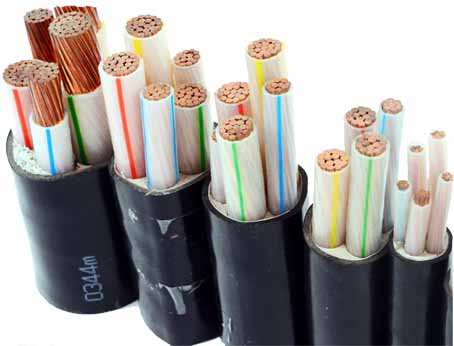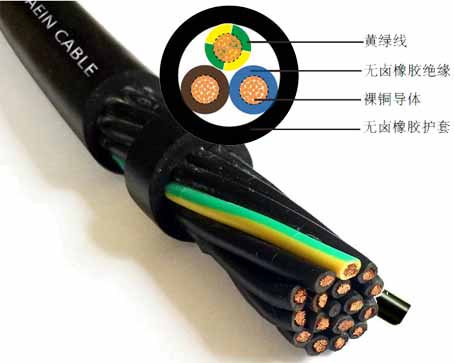Classification and standards of Lshf and LSZH cables

According to different cable flame-retardant materials, flame-retardant cables are divided into two categories: halogen-containing flame-retardant cables and halogen-free low-smoke flame-retardant (Lshf, LSZH) cables.
Among them, the insulating layer, sheath, outer sheath and auxiliary materials of halogen-containing flame-retardant cables are all or part of halogen-containing polyethylene (PVC) flame-retardant materials, so they have good flame-retardant properties. But when the cable burns, it will release a lot of dense smoke and halogen acid gas. Halogen acid gas is corrosive to surrounding electrical equipment. Rescuers need to wear gas masks to approach the scene to extinguish the fire. When the cable burns, it will cause harm to the surrounding electrical equipment and rescue personnel, which is not conducive to the fire fighting and rescue work, resulting in a serious "secondary hazard".
The insulation layer, sheath, outer sheath and auxiliary materials (tape and filling) of halogen-free low-smoke flame-retardant cables are all or partly made of halogen-free cross-linked polyethylene (XLPE) flame-retardant materials. Not only has better flame-retardant properties, but no halogen acid gas is released when the cable is burned, and the amount of smoke generated by the cable is also small. The corrosive gas produced by the burning of the cable is also between the flame retardancy of the cable and the reduction of the amount of halogen acid gas. A compromise method was adopted to develop a low-halogen, low-smoke flame-retardant cable. Its halogen content is about 1/3 of that of halogen-containing flame-retardant cables. The amount of smoke is also close to the recognized "low smoke" level.
According to the "Wire and Cable Combustion Test Method", the flame-retardant cables assessed by the bundled combustion test method are classified into A, B, and C3 categories. Among them, Type A cables have the most demanding test conditions, have better performance than Type B and C, and are the most expensive. In order to realize the flame retardant of the cable or improve the flame retardant level of the cable, people have developed the so-called "oxygen barrier" or "fire barrier". As a flame-retardant cable with a new structure such as filled or wrapped fire-proof and flame-retardant tape (fire-proof layer), this kind of cable is called "oxygen (fire) layer" cable. The main principle is that metal hydrate is added to the material, which can also realize low-halogen and low-smoke, halogen-free and low-smoke, and flame retardancy of cables. However, the so-called "oxygen barrier layer" and "fire barrier layer" are only a means to achieve flame retardancy of cables. In the final analysis, it is a flame-retardant cable, and the highest flame-retardant level it can achieve is also Class A. Therefore, flame-retardant cables cannot be called "oxygen barrier" cables, but "oxygen barrier" cables can only be said to be flame-retardant cables.

Use of flame-retardant cables
1. Laying dense cables
The flame resistance of cables when multiple cables are densely arranged should meet the requirements of the appropriate category in accordance with the "bundled wire and cable burning test method", the cable configuration, the prevention of catastrophic accidents, and the principles of economic rationality. For the following places or circuits that need to be energized within a certain period of time due to the external fire, the exposed cables should be protected against fire or use cables with fire resistance. Important circuits such as fire protection, alarm, emergency lighting, breaker operation DC power supply, and power supply for emergency shutdown of generator sets and other important circuits; Computer monitoring, dual relay protection, security power supply and other dual circuits share one of the circuits when the same channel is not isolated from each other.
2. Fire-resistant protection of cables
When the number of cables is small, fire-resistant paint or tape can be applied to the cables or the cables can be put through fire-resistant pipes. When there are many cables in the same channel, they should be laid in the fire-resistant trough box, and the power cable should be in a vented type. The semi-closed type can be used in the environment without flammable dust. When the cable protection section laid on the cable tray is not long, the fire-resistant package can also be used.
In oil tank farms, important public buildings with wooden structures, high-temperature places and other situations with high requirements for fire resistance, installation and economic performance, non-combustible mineral insulated cables can be used. When self-contained oil-filled cables are laid in public corridors, passenger tunnels, bridges, etc. where fire protection is required, they can be laid in sand. Cable trenches near high-voltage current and voltage transformers and oil-containing equipment should be sealed with the trench cover in this section.
3. Flame retardant cables are used in dense places
In cable-intensive places or enclosed passages with high safety requirements, automatic fire detection and alarm devices suitable for reliable environmental actions should be equipped. The oil supply system of the exposed oil-filled cable shall be equipped with an automatic fire alarm and locking device that can reflect the oil injection status. The cable-intensive parts of underground public facilities, the terminal installation of multiple oil-filled cables, etc., and the places with higher safety requirements can be installed with special fire-fighting facilities such as water spray fire extinguishing.





